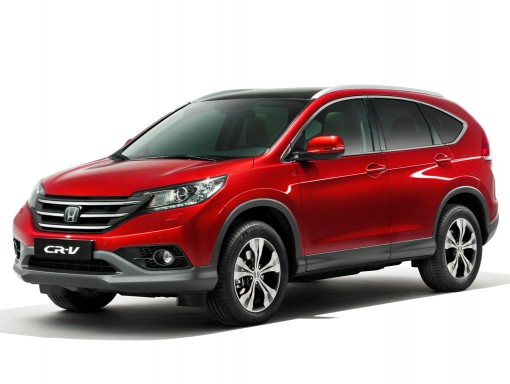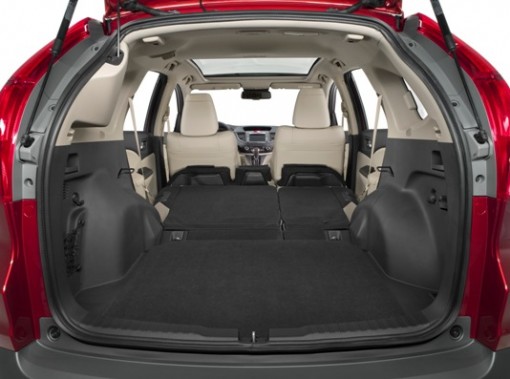Take a look at Honda’s latest CR-V

HONDA has released the first images of its new CR-V model aimed at European markets. The car is scheduled for an October launch in the UK.
Since its 1995 introduction, the CR-V has been a big seller for the Japanese manufacturer, notching up 5,000,000 sales worldwide. The new model, the fourth generation of the CR-V, has had a comprehensive makeover and redesign to make it appeal to European buyers and Honda hopes the new car’s better quality, practicality and refinement will take it still higher in the sales charts.
Although pricing, specification and other details will be confirmed closer to the launch date, it is known that, for the first time, the CR-V will be offered with a choice of both two- and four-wheel drive on the 2.0 i-VTEC model, while improvements to the petrol and 2.2 i-DTEC diesel engines have achieved a significant reduction in carbon dioxide emissions. It will continue to be built at Honda’s production facility in Swindon.
Compared to the previous generation CR-V, the new model takes on a more assertive and aerodynamic stance with a bolder nose section.
The CR-V has been designed as a global car, but the European model features a number of exterior refinements developed specifically for this market. A revised front bumper emphasises its dynamic appeal, while front LED daytime running lights and rear LED lights are further additions.
Finding the perfect balance between a car and an SUV influenced every element of the development process, including the exterior styling. Exterior designer Manabu Konaka explains: “The CR-V has always been a car for every occasion. It can be both casual and formal, but the appearance must always convey solidity and reliability.” The length and height of the car have been reduced by 5mm and 30mm respectively compared with the current model, without reducing the interior space.
With the rear seats folded flat, the boot capacity of the CR-V has grown by 148 litres to 1,648 litres and with the seats folded up, the boot capacity is a capacious 589 litres. The load length has been increased by 140mm to 1570mm, while the height of the load lip has been reduced by 25mm to make it easier to load heavy or awkward items. The boot of the CR-V can now accommodate two mountain bikes or four sets of golf clubs.
The addition of a keyless entry system and the power tailgate make it easier for owners to use the boot space and enhanced practicality. Within Honda’s global CR-V line-up, this power tailgate is unique to the European market.
The materials used have been carefully chosen for the European market. Care has also been taken to achieve a significant reduction in the engine and road noise entering the cabin. Sound insulation material has been applied to the floorpan below the passenger compartment, while sound absorption material has been fitted to the rear door, rear wheel arches, door frames, front bulkhead and bonnet. The doors now also feature a double seal. The net result is a 3dB reduction in cabin noise.
In the cabin attention focuses on the five-inch “intelligent” Multi-Information Display (i-MID), which controls the audio, telephone and navigation systems (where fitted).
The front seats also incorporate a whiplash mitigation system. Slits in the material of the seat back, folds in the cushion spring and a rotating mechanism on the spring combine to absorb the occupant’s energy in the event of an accident, alleviating the risk of whiplash injuries. The seats work in conjunction with the CRV’s Advanced Compatibility Engineering (ACE™) body structure.
Under the bonnet of the CR-V, customers will find either a 2.0-litre i-VTEC petrol engine or a 2.2-litre i-DTEC diesel engine. Both are a development of the engines found in the third generation CR-V but both have been comprehensively redesigned with a focus on reducing CO2 emissions. “We have placed a key emphasis on applying new technologies to reduce the friction in the engines and improve their efficiency,” explains Nakagawa. Idle-stop technology has also been introduced on all models fitted with a six-speed manual gearbox.
Also standard are Honda’s acclaimed ECON mode and Eco Assist systems. When the ECON button is pressed the throttle response and air-conditioning are automatically adjusted to minimise fuel consumption. The Eco Assist system uses the car’s dashboard display to advise drivers on how their driving style is impacting fuel economy, by changing the colour of the dial edges from white to green when driving more efficiently.

